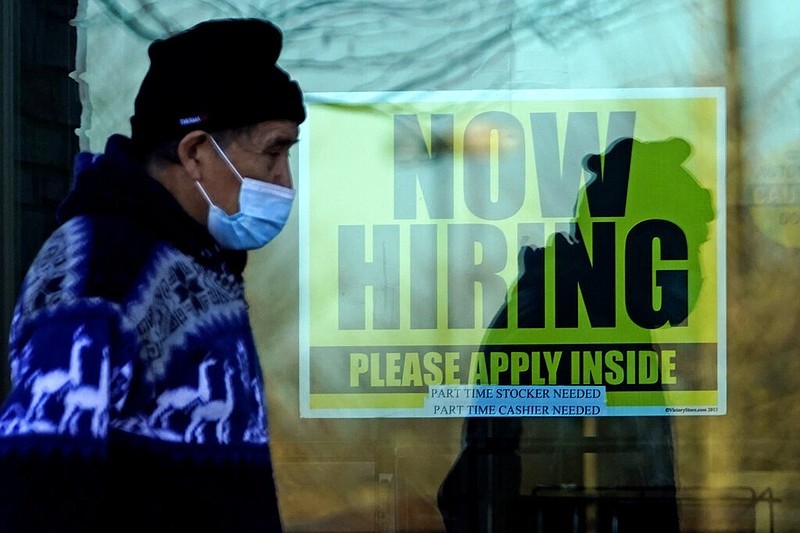Unemployment in Arkansas held steady at 4.4% in June for the third consecutive month as the state registered some improvement in the labor pool, which has suffered severe declines and raised concerns that lack of workers will hinder business openings and expansions.
The state Division of Workforce Services announced Friday that joblessness in Arkansas remained at 4.4% from May to June, still below the national unemployment rate of 5.9%, which inched up in June from 5.8% in May.
"I'm pleased that we're holding strong," Arkansas Commerce Secretary Mike Preston said Friday. "We're pretty consistent with the rest of the country right now."
Unemployment in Arkansas has been hovering between 4% and 5% since the beginning of the year. The state opened the year with unemployment at 4.6% in January. April, May and June have all recorded a 4.4% joblessness rate.
"It really seems that not a whole lot changed between May and June," said Michael Pakko, economist with the Arkansas Economic Development Institute at the University of Arkansas at Little Rock. "It looks like the Arkansas economy is treading water based on labor market data."
[CORONAVIRUS: Click here for our complete coverage » arkansasonline.com/coronavirus]
In June, Arkansas' civilian labor force declined 250, registering 750 fewer employed and 500 more unemployed Arkansans. Nonfarm payroll employment, which is now nearly 1.3 million, dropped 3,700 jobs in June.
Four major industry sectors posted job losses, more than offsetting gains in six sectors. As happens every year with the end of school, jobs in government fell 7,500. All losses occurred in state government educational services and local government educational services.
Leisure and hospitality, continuing to show improvement, added 3,100 jobs, with gains reported across all subsectors such as food services, hotels and arts, entertainment and recreation. Professional and business services added 1,100 jobs.
Compared with a year ago, there are 55,464 more Arkansans with jobs than there were in June 2020. Every major economic sector in the state has posted gains, with leisure and hospitality adding 14,000 workers year-over-year. Unemployment was 8% in Arkansas last June.
"Reflecting on where we were a year ago at this time, we've certainly come a long way," Preston said.
Another indication of the strong year-over-year economic improvements is highlighted in the state's most recent unemployment claims filings.
For the week ending July 11, 1,818 Arkansans filed new claims for unemployment benefits, according to statistics from Workforce Services. More than 14,000 Arkansans filed initial claims during the same week a year ago.
Likewise, 16,729 Arkansans filed continued claims for benefits during the week of July 11. More than 99,000 filed similar claims over the same week in 2020.
Preston, other economic development officials and business operators across the state are closely monitoring the labor pool, which declined by 250 from May to June. From April to May, the Arkansas labor force dropped by 4,733. The labor pool indicates how many Arkansans are actively seeking jobs.
In May, as businesses across multiple industries said they could not find workers to fill open positions, Gov. Asa Hutchinson said the state would stop paying the $300 weekly federal supplemental unemployment benefit. The governor said the payment was a disincentive for workers to find jobs and payments ended June 26.
"Our 4.4 percent unemployment rate continues to be significantly below the national rate of 5.9 percent," Hutchinson said Friday in a news release. "In fact, the national rate has been moving in the wrong direction. While employers are searching for workers to keep their businesses in operation or to expand, the shortage of workers reflects a hesitancy of some to return to the workforce. This hesitancy should diminish in the coming months as federal stimulus money slows, and our workers transition from training into full employment."
Economic development leaders are banking on the labor pool filling up again now that the payments have dried up. The statistics released Friday do not yet provide a clear picture of whether the strategy is working.
"It'll be interesting to see ... what these numbers look like next month and to see how far the needle gets moved," Preston said. "Right now, it's still too early to tell."
